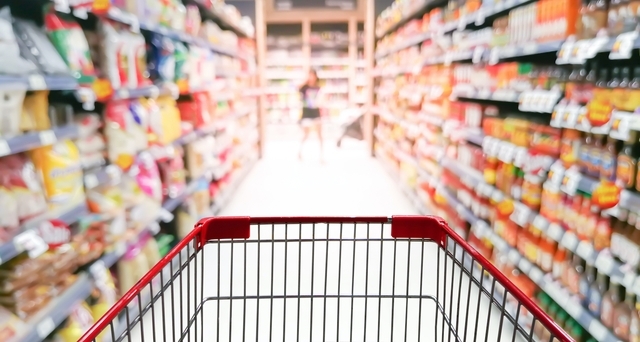4 Essential Strategies for a Successful Online Grocery Marketplace

The shift to online grocery shopping has been anything but gradual. At first, the massive spikes in demand seemed temporary, pushing grocers to adopt digital strategies on the fly. Many opted for quick solutions - like partnerships with grocery delivery apps such as Instacart or Peapod - that allowed them to instantly address this new, seemingly fleeting demand. While helpful in meeting short-term needs, these partnerships are not effective long-term solutions for profitable eCommerce growth in what has become a new reality: more buyers want to order their groceries online.
According to a December 2020 Forrester report, about half of Generation Z (56%) and Millennials (48%) say they’re likely to continue buying groceries online post-pandemic, and a third of Generation X consumers (34%) feel the same. Analysts believe this trend will continue to gain traction, as grocery shoppers have shown a preference for online shopping: According to McKinsey, this has occurred even in categories shoppers have traditionally avoided such as fresh meat and produce.
This data is a glimpse into the future – and market leaders in grocery are aggressively responding with investments in a comprehensive, omnichannel grocery experience. Over the past few months, household names including The Kroger Co. and Walmart in the U.S., Waitrose in the U.K., and Carrefour in France made headlines, alongside digital giants like Amazon, for their investments in online grocery. As the race heats up shoppers have shown they’ll gravitate to the business that can deliver the best experience. A recent Brick Meets Click survey showed that June marked the second straight month 28% of shoppers used both a grocery service and a mass retail service to buy groceries - placing an additional urgency on grocers to identify sustainable, scalable solutions that offer customers more of the shopping experience they’re looking for.
Online marketplaces offer crucial scalability, operational efficiency, and profitability for grocery stores without losing touch with their customers: creating a narrow window of opportunity for businesses to seize a competitive advantage in this new environment. But not all marketplaces are created equal. To realize the full benefits of online grocery marketplaces, grocers must steer away from the pitfalls that can hamper marketplace success.
1. Your marketplace must be integrated with your core online grocery experience
Online marketplaces are a departure from the traditional grocery business model, requiring you to balance the needs of sellers, buyers, partners, and your own business with an ecosystem approach. Even so, the marketplace must be treated as an integrated part of your eCommerce experience – not a standalone initiative.
Launching your marketplace as a separate business, with a separate checkout experience, introduces friction into the purchasing process and forces you to develop a new digital marketing strategy from scratch. Successful grocery marketplaces incorporate third-party offerings into the existing first-party online shopping experience. Equipped with trusted 3rd party sellers, your marketplace becomes an extension of your brand - offering already-loyal consumers more of the brands they trust and are searching for. By doing so, you’ll be able to hit the ground running and quickly identify the marketplace offerings that resonate most with your customers. Your marketplace sellers will be quick to see value, strengthening their affinity for your marketplace. Ultimately – and most importantly – your business will gain incremental revenue from month one
2. You need to work with marketplace sellers to solve the fulfillment puzzle
The economics of shipping groceries straight to customers’ doors is a challenge – and keeping fulfillment and shipping costs down for sellers and customers is necessary for your marketplace to grow. Successful grocery marketplaces offer “fulfillment by operator,” giving sellers the option of leveraging your existing distribution networks for an additional fee. (As an added benefit, this supports omnichannel strategies like ship-to-store at a lower cost.)
Another option is to negotiate preferred shipping rates for sellers, as French grocer Pour de Bon has done. When marketplace orders are placed, they are collected and distributed by ChronoFresh, a subsidiary of Groupe La Poste, which delivers the groceries directly to households.
3. You should look at categories beyond traditional grocery
With an online marketplace, you can think outside the box (or should we say outside the shelf?) and grow in new categories with little risk. Consider Kroger’s ship-to-home marketplace offering, which launched at the end of 2020, targeting categories like toys and homewares in addition to international foods and specialty food items. Not only does a marketplace afford you the freedom to test out new categories - without taking on the ownership risk of new inventory - it offers the perfect “laboratory” to test out and gather data on what shoppers want most. Grocers can then use this information to inform private-label initiatives, which while offering higher margins and ways to diversify, have a significantly longer lead time.
In the online world, you don’t have to restrict the types of product categories or number of SKUs you sell based on floor space productivity or how many end-caps are available in a store. By working with carefully selected, high-quality 3rd party sellers, you can capture the endless-aisle opportunity and move into adjacent higher-margin categories to capture full basket grocery shops and drive bottom-line profitability.
4. Your marketplace has to be treated as a pillar of your omnichannel strategy
Even in the new digital-first age, where eCommerce is king, grocery shoppers haven’t abandoned their local stores. Instead, they’re seeking a hybrid model - one that combines the online and in-store experiences. In order for your marketplace to thrive, it needs to not only meet what your shoppers are looking for, but also how they’re shopping. This means enabling marketplace products to be bought online and picked up in-store (BOPIS), as well as making it easy for shoppers to order marketplace products while shopping in-store.
Consider the shot across the bow that was Amazon’s acquisition of Whole Foods in 2017 along with the launch of their own grocery delivery service, Amazon Fresh. Not only is this service continuing to pop up in new areas (Amazon Fresh launched in Spain earlier this year) but the company is doubling down on grocery: building high-tech brick-and-mortar grocery storefronts of its own, both in the U.S. and internationally. Rather than backing down, Amazon, along with other big-box retailers, is becoming more emboldened, speeding up the timeline grocers have to react and implement a solution of their own.
Maximize the impact of your marketplace strategy with buy-in from your entire organization
We’ve said it before and will say again, that the marketplace model is transformational – it’s not a side project, it's your business. Ensuring that key stakeholders across your entire business are bought into your marketplace strategy is essential to achieving the famous “flywheel effect” that powers marketplace success. Through increased speed, scale, and agility, you can step into this virtuous cycle of growth that leads to more sellers, more customers, and more marketplace sales. This will set your business on a growth trajectory with increased profitability that simply isn’t achievable through the traditional grocery model.
A successful marketplace doesn’t just “extend the aisle” for your customers online. It puts you at the forefront of the future of grocery.



